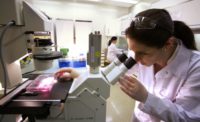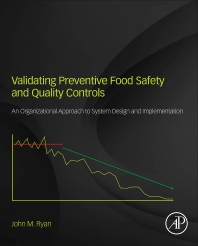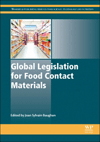Environmental monitoring helps prevent food recalls
An effective environmental monitoring program can help dairy processors prevent pathogen-related food recalls.



It’s no secret that food recalls can wreak havoc on a dairy processing company, damaging both sales and brand reputation. And one of the major causes of food recalls across the food and beverage industry is bacterial contamination.
In the fourth quarter of 2018 alone, FDA food recalls totaled 156, according to data from Stericycle Expert Solutions, Indianapolis. Moreover, bacterial contamination was to blame for more than half — 52.3% — of those recalls.
“Bacterial contamination can happen at any point in the farm-to-consumer food chain,” Rocio Foncea, Ph.D., a global technical service scientist with St. Paul, Minn.-based 3M, pointed out. “However, it is safe to say that most pathogenic contamination of finished dairy products occurs due to the pathogens either not being properly eliminated with an intervention — typically pasteurization or heat treatment — or because the already-treated product later comes into contact with a pathogen living somewhere in the plant environment.”
Environmental monitoring is critical to ensuring that the latter situation doesn’t occur in a dairy processing facility. An effective environmental monitoring program (EMP) will evaluate the overall hygienic conditions related to sanitary design, operational methods and personnel practices, said Kantha Channaiah, director of microbiology for AIB International, Manhattan, Kan.
“Additionally, the EMP assesses the risks posed by any pathogen of concern and acts as an early warning tool,” he explained. “The EMP is not designed to validate the effectiveness of cleaning and sanitizing methods, but is more focused on verifying cleaning and sanitizing frequencies and all the components of the good manufacturing practices in an establishment.”
The overall objective, Channaiah added, is to identify and eliminate potential microbial contaminant sources before risking the safety of dairy products.
Common areas of concern
The areas of most concern include those located along the border of the raw and post-heat-treatment milk area, noted Matthew Sawyer, market development manager, beverage, dairy and food service for Lansing, Mich.-based Neogen Corp.
“Any failures along this border allowing raw milk into the pasteurized area of the plant will require extensive cleanup, and the aftereffects of such a raw milk spill linger for days,” he said. “The danger level here is the highest, so it is important to have frequent samples along this border.”
Another focus area should be anywhere a product is open to the environment prior to final packaging, Sawyer said.
“Loose floor tile, unsealed walls, under-equipment supports or soiled floor grating are common areas where pathogens can thrive,” he noted. “If your plant has multiple floors, it is very important to check the underside of walkways and between stair step grates. Contaminants can lurk there, waiting for water or shoes to spread them to levels below.”
Dripping pipes or equipment supports as a result of water condensation present an additional potential source of sporadic environmental contamination, Sawyer said. Dairy plants should monitor the entryways into the processing environment, too, as these are high-moisture areas due to handwashing activity and could harbor Listeria species and Staphylococcus aureus.
Inadequate sanitation practices tied to equipment also are cause for concern, Channaiah noted, as is cross-contamination across post-pasteurization processing, storage and distribution.
“Traffic patterns are a potential area of contamination, too,” he added. “It is common for lab personnel, maintenance techs, leadership personnel, etc., to travel from raw to pasteurized [areas] or from the trash dump to production, etc.”
Prioritize by zone
Almost all EMPs rely on the concept of four zones when it comes to prioritizing the above-mentioned and other areas of concern, Foncea said, based on difficulty of cleaning and the likelihood of coming into contact with the food product. Zone 1 is the most critical of the zones, encompassing food-contact surfaces such as slicers, fillers, knives, air blowers and employees’ hands.
“Any surviving pathogen has a high probability of contaminating the finished product,” she explained.
Zone 2, comprising all nonfood-contact areas located close to food-contact surfaces, is the second most critical of the zones. It includes equipment and areas such as cap hoppers, maintenance tools, fillers’ human-machine interfaces and debagging tables, Channaiah said.
Zone 3, taking in all nonfood-contact areas farther away from Zone 1 surfaces, comes next, he noted. These areas include walls, floors, the ceiling, air-handling units and more.
Finally, Zone 4 comprises the least likely areas to pose a potential pathogen threat to food. But that zone — consisting of nonfood-contact surfaces that are located outside of the processing areas but still within the physical building — is still important in any EMP program, Foncea noted.
“Facilities should utilize a hygienic zoning strategy to prevent cross-contamination from raw to finished product,” she added. “Areas with raw, unprocessed materials should be physically separated from pasteurized product and sanitized equipment.”
Avoid common mistakes
When it comes to swab sampling within the identified hygiene zones, dairy processors will want to avoid some common missteps. One of those, Channaiah noted, is the improper division of samples within the four zones.
“In an EMP program, it is important to concentrate on Zones 2 and 3,” he stressed. “In general, 65% to 75% of environmental swab samples are collected from Zones 2 and 3.”
Another mistake is initiating sampling without having any clear written plans for follow-up actions related to positive findings, Foncea said.
“A critical component of each environmental pathogen sampling plan is the development of a written plan and standard operating practice that defines the action that will be taken if a given sample tests positive for the target organism,” she said.
For his part, Sawyer sees failure to commit to the “seek and destroy” style of hunting down pathogens as a serious misstep in an EMP program.
“An important part of a plan is building in random sites that the person sampling can fill in,” he added. “This gives you a complete picture of your environment, in addition to the routine areas you monitor, and aids you in keeping a defendable distance, like a no-man’s land, between the areas you expect to find pathogens and the areas you are fighting to keep pathogen-free.”
That buffer zone essentially gives dairy processors the time to identify a problem before it comes into contact with food, Sawyer added.
Enhance existing efforts
Dairy processors can take a number of other steps to enhance current EMP efforts. Foncea advises application of a HACCP-style approach when it comes to pathogen interventions, or critical control points (CCPs).
“In particular, they should be vigilant in their CCP ‘validations’ that establish proper parameters for controlling target pathogens and in their CCP ‘verifications’ that continuously monitor treated products to [ensure] those control measures were effective,” she said.
And in developing a sampling plan, dairy processors will want to ask (and answer) some specific questions, Foncea said, including:
- “What are the target organisms?”
- “What do we test for?”
- “When do we test?”
- “Where do we test?”
- “How often do we test?”
“Beyond validations and verifications of control measures, dairy processors should rely on multiple forms of sampling and testing whenever processing, storing and distributing occurs,” she added. “A strong environmental monitoring program will encompass not only testing of pathogens, but also indicator and spoilage organisms, as well as allergens.”
For his part, Channaiah recommends that dairy processors rotate sampling sites for better results. And they should collect environmental swab samples either several hours into production or, preferably, immediately before cleanup — not too closely after surface sanitation.
“Periodically verify your written environmental monitoring procedures by increased and intensive environmental sampling of the plant to assess whether the sampling sites are appropriate,” he advised processors. “Document the swab results — both positive and negative — associated root cause evaluation and final corrective actions.”
To minimize pathogen entry into the plant, Channaiah also recommends that plants establish a captive shoe program.
Finally, dairy processors could look to the experts for help in their EMP efforts. For example, they could cut the time from surface sampling to test result for Listeria to under an hour by using Neogen’s ANSR Listeria Right Now system, which also destroys the growth of any cells, Sawyer said.
“Finding pathogens faster brings cleanup to a one-person job, as opposed to requiring a crew of 10 to 20, after a pathogen is spread,” he stressed.
And in addition to its range of solutions for EMPs, 3M is introducing “new-to-the-industry resources” that will help guide processors in creating and implementing EMPs, Foncea said.
“This includes a comprehensive Environmental Monitoring Handbook and a related webinar series, both in partnership with Cornell University,” she noted.
To learn more about these new resources, visit https://tinyurl.com/yyqolkf6.
Looking for a reprint of this article?
From high-res PDFs to custom plaques, order your copy today!








